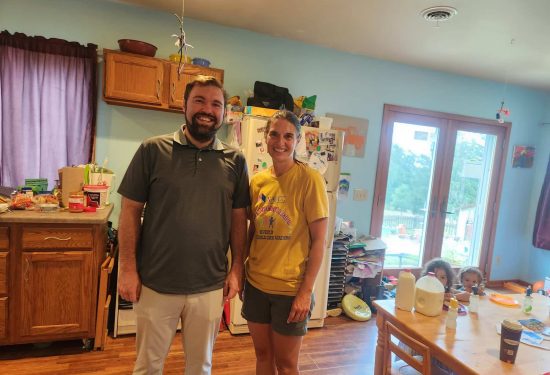Last year, Josie opened her family child care (FCC) home. “I was excited,” she recalls. “I was feeling so confident. I started my own business. Look, I’ve got all these legal things; I made my own handbook. I’m making more money. Woo, I did it.” Josie is the first licensed family child care provider in her county. She loves what she does. Yet, seven months into operating her FCC, she’s facing the challenges of being a self-employed business owner as a single parent in a rural area. One of the greatest challenges is affordable and accessible health care.
Josie depends on medication to manage her high blood pressure. Yet, she’s had a hard time consistently being able to afford health insurance. She is currently insured through the marketplace and qualifies for significant tax credits. Josie, like many others, uses her premium tax credit in advance to lower her monthly premium. However, because the tax credits are calculated based on the previous year’s income, any increase in income during the year likely lowers the amount of tax credits. And if an individual uses more advance payments of the tax credit than what they qualify for based on final yearly income, they must repay the difference when filing their federal income tax return. Since Josie’s FCC was only open for half of 2022, she anticipates having to repay a portion of her tax credits. This prospect terrifies her. She’s lived paycheck to paycheck her entire adult life. She doesn’t have a reserve she can dip into to pay taxes or even afford a higher monthly premium. Worse, she has no indication of how much she might owe and what that might mean for her health. Josie says, “I’m really concerned. I don’t know if I can afford my medication without health insurance and I don’t want to go back to that position when I felt terrible all the time.” Josie, like many others, feels trapped by her health insurance plan. The unpredictability of health care costs year over year causes an immense amount of anxiety.
Early educators are far more likely to be uninsured than their counterparts in the K-12 system. In 2019, 8.1 percent of listed home-based ECE providers and 16.5 percent of unlisted paid home-based ECE providers were uninsured. By comparison, 4.2 percent of all teachers were uninsured. Without access to affordable and high-quality health care, providers are much more likely to forgo life-saving preventative health care or fall into debilitating medical debt. Recently, Home Grown interviewed providers across the country to hear their experience getting access to health care. We found that providers consistently reported that their ability to be insured wavered year over year. Changes in income, marital status, retirement, etc. caused providers to move in and out of having health insurance.
Insurance through the marketplace is far more affordable than private insurance, but for these providers, the alternative to insurance through the marketplace is no insurance at all. Many providers we spoke to have had positive experiences getting financial assistance directly from the hospital. Thus many providers would rather “roll the dice” and risk taking on medical expenses than pay the premiums, copays, and coinsurance that are associated with having health insurance.
Those who do have health insurance are not guaranteed accessible care. “I work really long hours. There’s no one to give you a break,” Josie says. Living in a rural area, Josie has struggled to find licensed substitutes.
We prompted providers to tell stories about their experience scheduling appointments, taking a leave of absence due to health concerns or getting immediate medical attention. None of these stories involved the use of licensed substitutes. Rather, providers relied on the people they trust: their spouses, a sister, an adult child, etc.
The nature of many caregivers is to prioritize the health of others over their own. For home-based child care providers, the opportunity costs of taking time off are significant. Not only do they lose income in the short run while not working, they risk families leaving their care all together. “About a month ago, I hurt my shoulder,” Josie says. “They put me in a sling and told me that I couldn’t work for six business days. I had a single dad who was very upset and is now pulling his child out. I felt so disappointed, like I let him down. A huge amount of guilt. I just felt inadequate.”
Providers innately know they cannot care for children if they are not well. And yet, time and time again providers told stories of getting sick and merely hoping it would go away, putting their own well-being aside. We need solutions that give providers predictability over their health care costs, the ability to take time off without suffering a loss of income, and the incentives that remind them of their value and worth.



